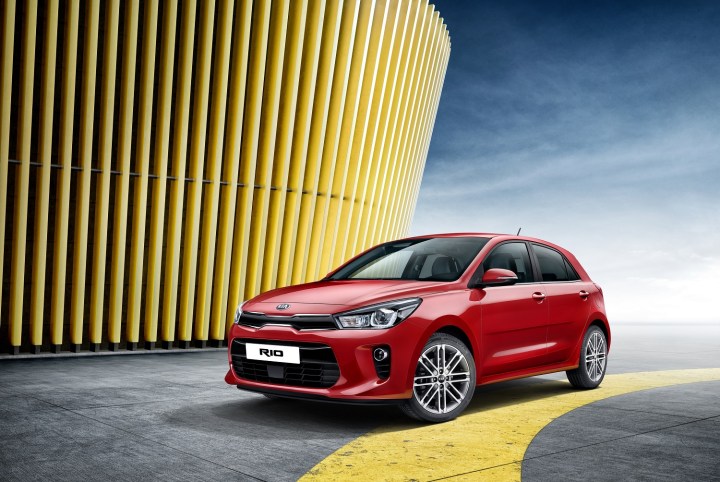
The new Rio is more of a head-turner than ever before. The outgoing model’s soft lines have given way to an edgier, more grown-up look. Notably, the Rio gets a taller front end with a grille that’s wider than the one found on the current model, and swept-back headlights; the look is loosely inspired by the funky Soul. Out back, it features a more upright C-pillar and LED tail lights. Select trim levels benefit from a discreet roof-mounted spoiler.
The stylish cabin features a three-spoke steering wheel, a slanted center console, and a sculpted dashboard with horizontal lines that emphasize width. Speaking of width, the hatchback boasts a rear cargo capacity of 325 liters (about 11.5 cubic feet), which means the new version isn’t just better-looking than its predecessor, it’s more practical as well.
The Rio will be available with the newest generation of Kia’s touchscreen-based infotainment system, and it’s expected to inherit a handful of electronic driving aids from bigger members of the South Korean company’s lineup. As a plus for smartphone addicts, the hatch will offer both Android Auto and Apple CarPlay connectivity.
In terms of technical details, the Rio will offer a range of gas and diesel engines globally, including a 1.0-liter turbocharged gas three-cylinder that Kia says will improve handling due to its low weight. The brand didn’t go into specifics about power outputs or what engines will be available in different markets, however we expect those questions to be answered closer to the vehicle’s on-sale date of first quarter 2017.
Read more: Kia is out to prove that not all exciting cars come from Europe
Unfortunately we’ll only get to see the hatchback model in Paris, which makes sense because five-door models are considerably more popular than four-door sedans on the Old Continent. The four-door variant of the new Rio will be presented to the public either in the fall during the Los Angeles Auto Show, or early next year at the Chicago Auto Show.
Editors' Recommendations
- Kia reinvents the van with its electric Platform Beyond Vehicles
- Samsung says it’s skipping IFA, Europe’s biggest technology show
- New York Auto Show postponed due to coronavirus concerns
- Lexus unveils its first electric car, but it’s unlikely to be sold in the U.S.
- 2020 Nissan Sentra banishes boring styling, as well as its turbocharged engine







